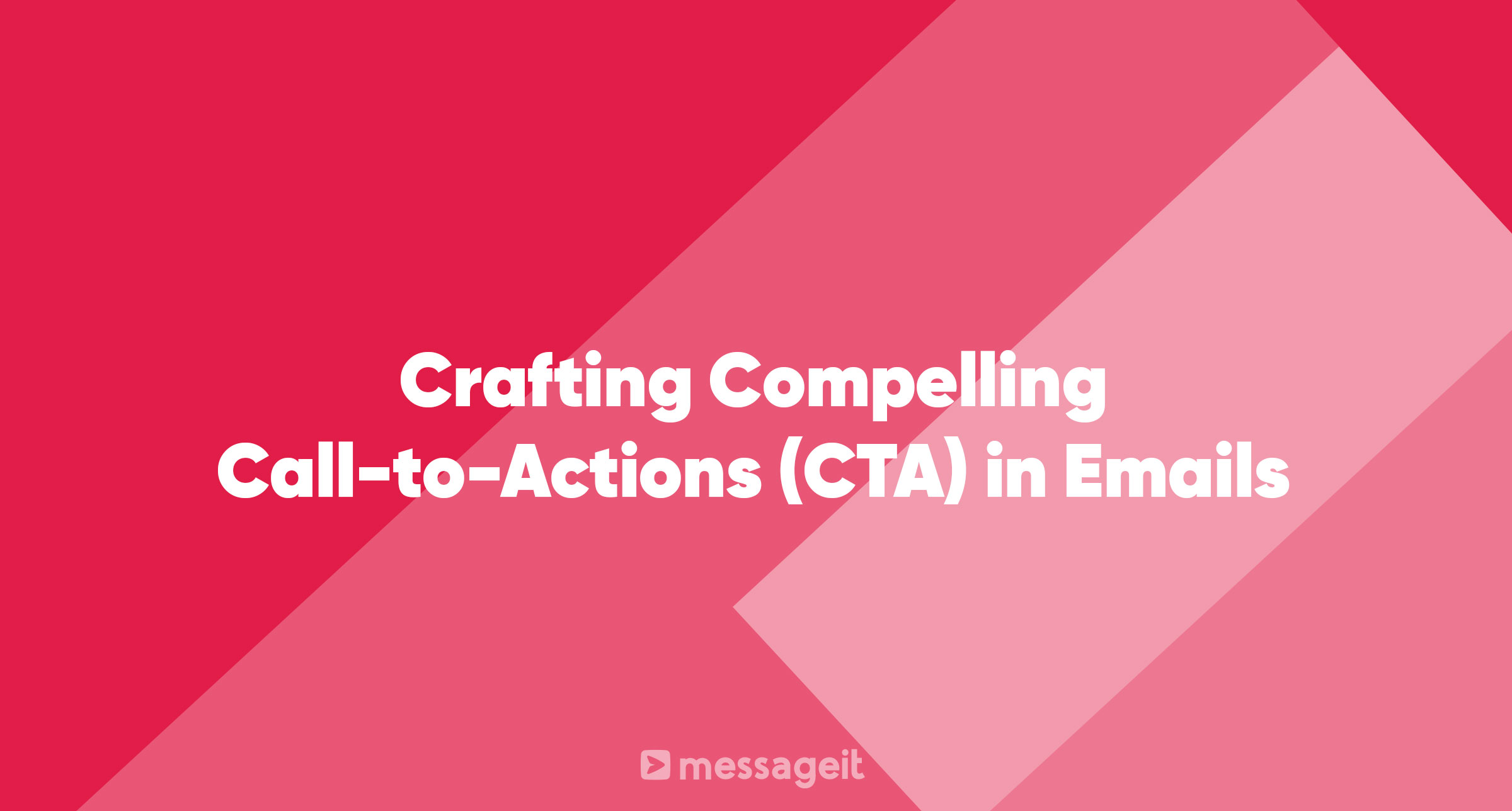Email marketing remains a powerful tool for businesses, with its potential to connect directly with customers and prospects. One of the critical elements that contribute to the success of an email campaign is the Call-to-Action (CTA). This guide explores how you can create compelling CTAs in your emails for a more effective email marketing strategy.
Introduction to CTA in Emails
A Call-to-Action (CTA) is a prompt that guides the recipient towards the next step you want them to take. In email marketing, CTAs can be a button, link, or even a simple instruction within the text, which incites the reader to act, leading to higher engagement and conversion rates.
Why Email CTAs Matter
Email CTAs are the bridge between the email content and the action you want your audience to take. They are the triggers that turn passive reading into active engagement. A well-crafted CTA can drive traffic to your website, boost conversions, and ultimately, increase your business's revenue.
Creating Clear and Actionable CTAs
A clear and actionable CTA starts with a strong command verb. It tells the audience exactly what you want them to do. Depending on your email's purpose, you could use action verbs such as 'buy', 'download', 'subscribe', or 'register'. Make sure your CTA is concise, direct, and easy to understand.
Powering CTAs with Emotion and Enthusiasm
Adding emotion or enthusiasm to your CTAs can make them more compelling. Use words that provoke a strong emotional response or create a sense of urgency. Phrases like 'Buy now and get 50% off', 'Subscribe today and get exclusive access', or 'Download now for free tips and tricks' can excite your audience and motivate them to take action.
Personalizing CTAs for Your Audience
Personalizing your CTAs can significantly increase your click-through rates. Tailor your CTAs to your audience's needs, interests, and preferences. If you have segmented your email list, use this segmentation to create highly personalized CTAs. For instance, new subscribers could receive a 'Get Started' button, while loyal customers might see a 'Claim Your Exclusive Discount' button.
Making Your CTAs Stand Out
Your CTAs should be the most noticeable part of your email. Use contrast, color, size, and shape to make your CTAs stand out. Also, consider the placement of your CTAs in the email. Most experts agree that placing the CTA above the fold (the part of the email visible without scrolling) usually results in better click-through rates.
Adding a Sense of Urgency to Your CTAs
Adding a sense of urgency to your CTAs can drive immediate action. Phrases like 'Limited Time Offer', 'Sale Ends Soon', or 'Only a Few Items Left' can induce a fear of missing out (FOMO), prompting your readers to act quickly.
A/B Testing and Optimizing Your CTAs
Testing and optimizing your CTAs is crucial for improving their effectiveness. Using A/B testing, you can try out different versions of your CTAs to see which one performs better. You can test various elements, including the wording, placement, color, and shape of your CTAs.
Understanding Device-Specific CTAs
In today's mobile-first world, it's essential to optimize your CTAs for different devices. For instance, CTAs for mobile users should be concise and easy to tap. You can also use features like 'Click to Call' for mobile CTAs.
Conclusion
Crafting compelling CTAs in your emails is both an art and a science. With the right approach, you can create CTAs that not only resonate with your audience but also drive them to take the desired action. Remember, the success of your email marketing efforts largely depends on how effectively you can prompt your readers to act. So, make your CTAs count!
Author's Note: This article is a result of extensive research and analysis of various resources, including expert advice and industry best practices. While the information provided is accurate at the time of writing, trends and practices in email marketing can evolve over time. Therefore, it's advisable to stay updated with the latest developments in the field for the most effective strategies.
